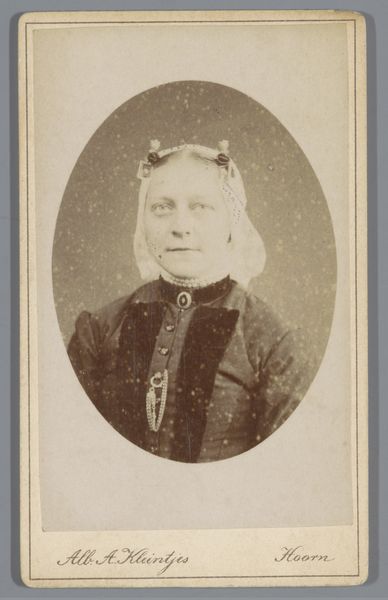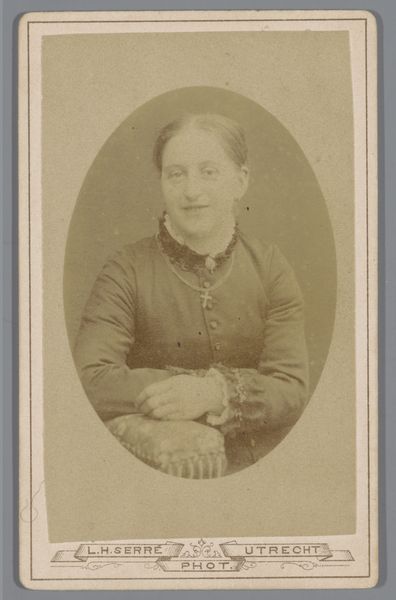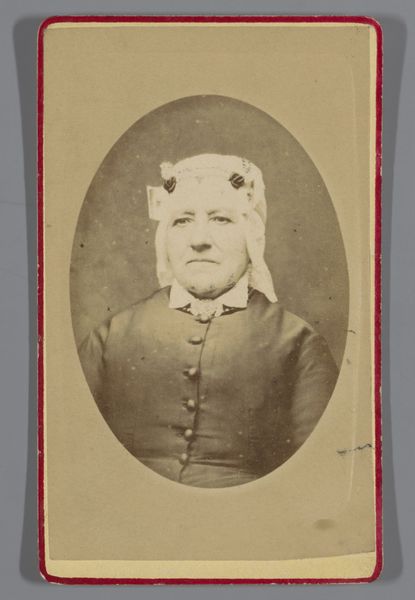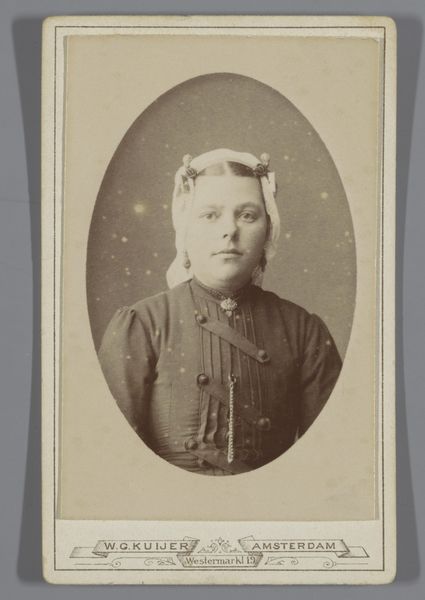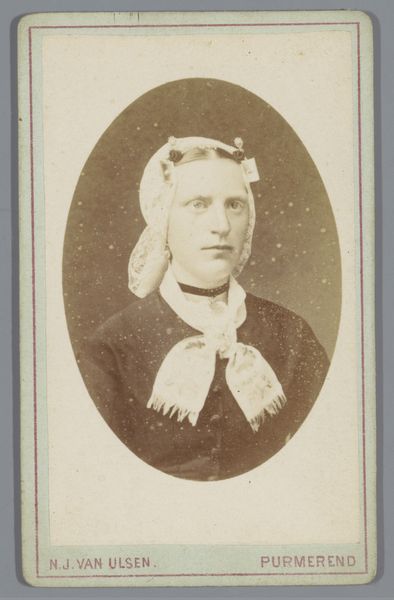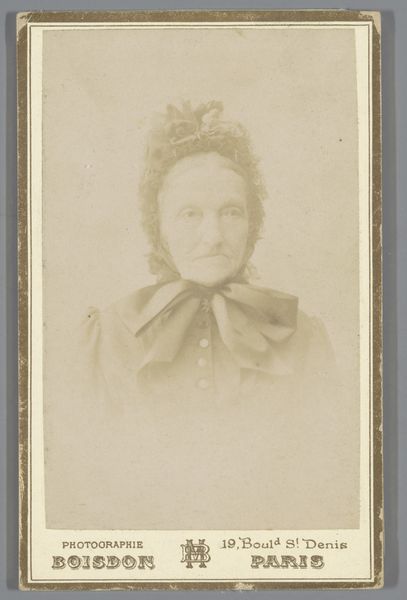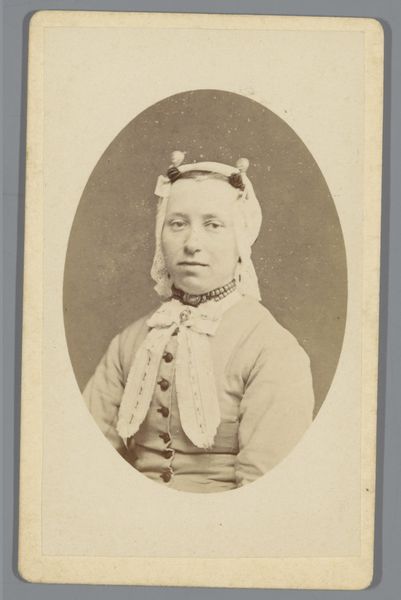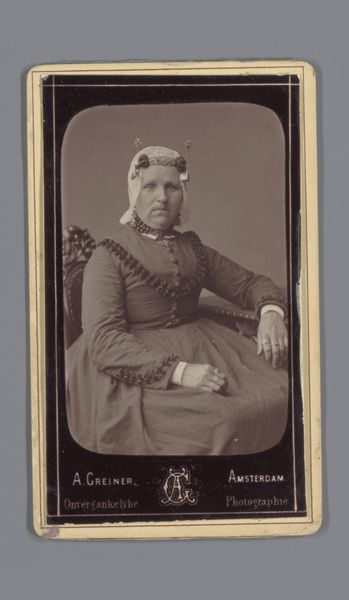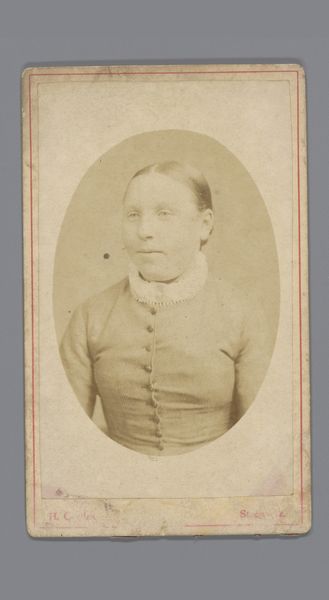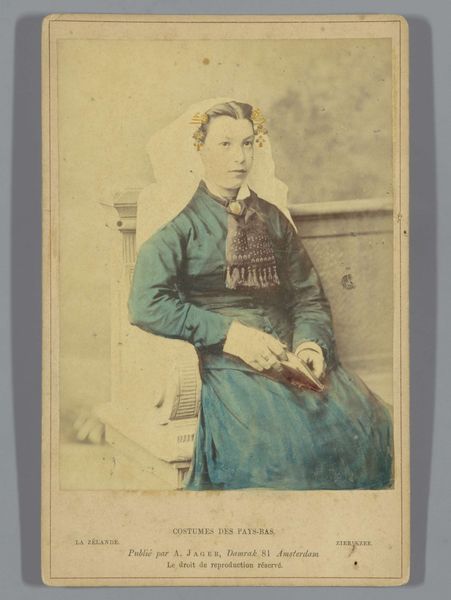
#
photo of handprinted image
#
yellowing
#
aged paper
#
vintage
#
photo restoration
#
portrait reference
#
printed format
#
unrealistic statue
#
framed image
#
paper medium
Dimensions: length 104 mm, width 62 mm
Copyright: Rijks Museum: Open Domain
Curator: The photograph before us is entitled "Portret van Trijntje Kramer" created sometime between 1857 and 1898 by Pieter Siewers. It's an oval portrait on paper medium. Editor: My first thought is how contained she seems. The oval shape, the dark dress, everything directs the gaze firmly to her face. Curator: The containment speaks to certain period aesthetics, a framing device quite common for photographic portraits of the time. Look at the way the light catches the planes of her face; soft, almost diffused, certainly not the high contrast we associate with modern portraiture. Editor: It’s fascinating how the artist handles the texture. Despite the photographic medium, there’s an almost painterly quality in the rendering of her clothing and lace head covering. What do you make of the head covering itself, historically speaking? Curator: A complex story lies within those folds. Such headdresses often indicated regional or community affiliation, as well as marital status. The ornamentation, those rose embellishments, hint at a specific social standing or perhaps an occasion for which this photograph was taken. The politics of adornment, quite a loaded subject. Editor: Indeed. Notice how the subject's gaze meets the viewer’s. There's an awareness, but a subtle reservation as well. Also the framing, placing the figure in the middle. It conveys an importance or status. Curator: Precisely! And consider the social impact of readily available photography in this period. It democratized portraiture, placing it within reach of a broader segment of society. Trijntje Kramer's portrait serves as a potent symbol of changing socio-economic landscapes of the time. Editor: So, what this picture represents to me now is the possibility that art is not all that exclusive. This is interesting! Curator: A fine encapsulation. The dialogue between the individual and society is forever inscribed in an image such as this, providing a layered reading beyond the surface representation.
Comments
No comments
Be the first to comment and join the conversation on the ultimate creative platform.
